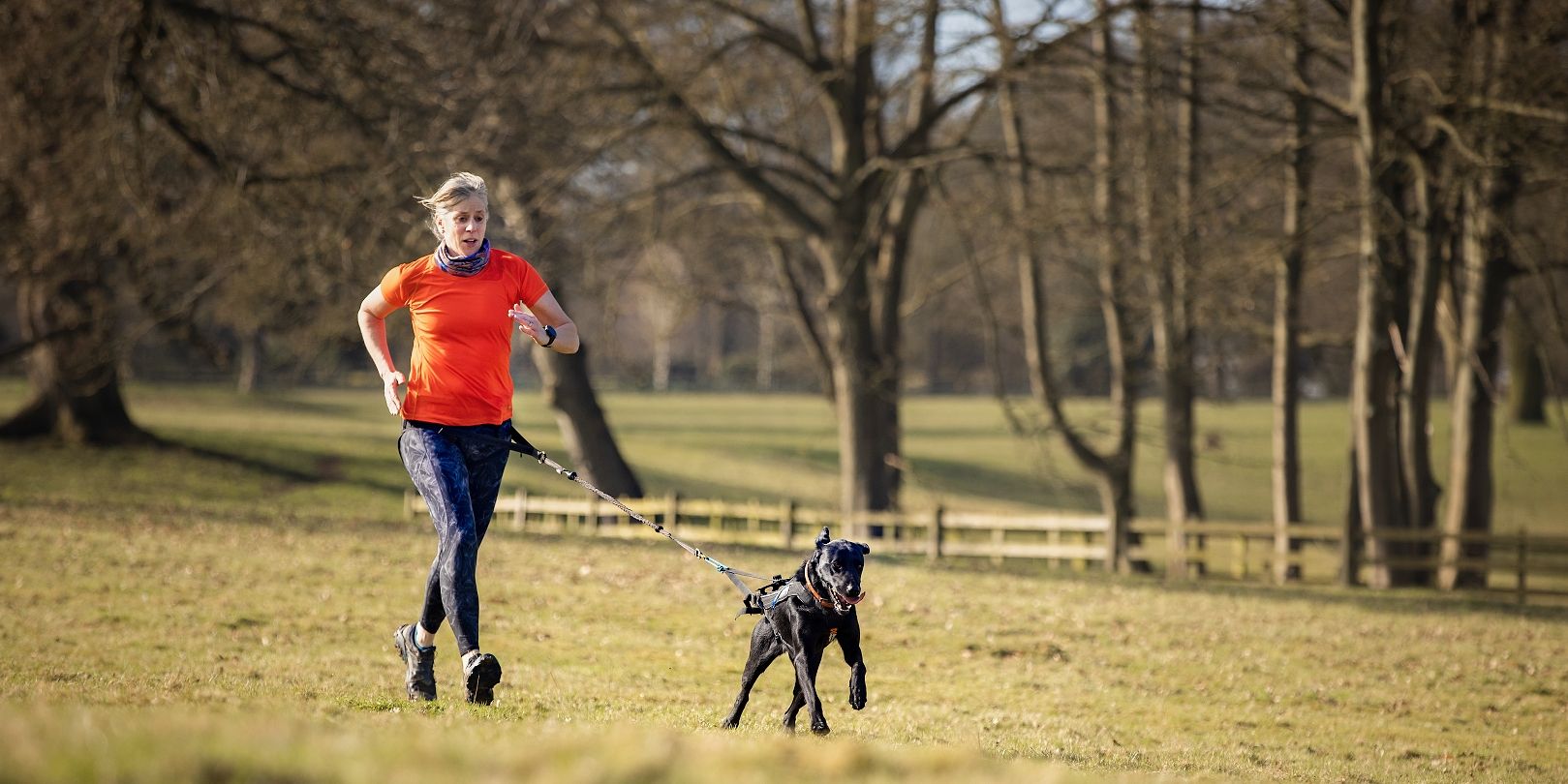- September 9, 2022
- No Comment
- 7 minutes read
Running with a dog lead: how to do it correctly – runnersworld.com

We earn a commission for products purchased through some links in this article.
What is the correct way to run with different types of dog leads?
Going for a run with your dog can be a great way to bond and tick two things off the list simultaneously. It can be time-consuming to fit in a run and a dog walk so combining them together is a pawsome, efficient way to exercise.
Dog ownership along with running participation has rocketed in recent years and training together can be a really effective way to assist with weight loss as obesity rates rise in pets, as well as humans. It is also scientifically proven that owning a dog makes you a better runner.
Running with your dog, known as canicross, is also beneficial for a dog’s mental health and can address problems such as separation anxiety, stress, destructive behaviour and boredom.
But what many people don’t realise is running incorrectly with your dog on a lead can be potentially harmful to your dog and yourself.
We spoke to dog running expert and canicross instructor Louise Humphrey of Paws 4 Running about how to safely, and correctly, run with your dog on a lead.
There are three main problems with running with a dog on a lead attached to the collar. Dogs are strong animals, even small canines, and when they run they are probably going to be faster than you. This means that they will pull on the lead, which may choke them if it is attached to a collar. It is uncomfortable for the dog and strongly discouraged by canicross professionals.
The second issue is that running with a lead in your hand can cause you imbalances and lead to poor running form. Being pulled on one side may lead to jarring, which can cause wrist or shoulder injuries. It also means you are not able to run efficiently because you have limited arm drive on one side.
There is also less control when you run with a dog on a lead attached to its collar. It makes it easier for the dog to pull you to one side particularly if they are reactive or they suddenly see something that piques their interest.
A much safer alternative is to use a canicross harness. These are specially designed to give your dog as much movement as possible. They are comfortable to wear and don’t restrict shoulder movement, meaning your dog will be less prone to injury.
There is a variety of canicross harnesses but broadly they fall into short and long. The difference is where the pulling motion comes from. If your dog has a strong pull then they will probably suit a long harness because this distributes the load across the dog whereas a short harness encourages a dog to power from their front legs.
It is important to ensure a harness is properly measured and fitted. DogFit provide excellent starter kits and offers taster sessions to fit your dog with a harness. They also have a directory of canicross instructors across the country who can offer free fittings.
Once you have a harness fitted for your dog, the next stage is to get your own harness or canicross belt. The benefit of a human harness is that it puts less strain on your lower back, particularly if you have strong-pulling dog. By comparison, a normal waist belt is less supportive and could potentially lead to back injuries.
Instead of sitting around the waist, a human canicross harness sits on the pelvis and is usually fixed in place with leg straps. This enables the load of the dog pulling to be absorbed by the strongest part of the body – the pelvis – rather than your lower back.
Wearing a harness will also give you greater control of your dog because they won’t be yanking your arm. Instead, they will be attached to a solid core via a special lead. This allows you to run hands-free, driving your elbows backwards for momentum but also being able to use your arms for balance on uneven trails.
The vital component between your dog’s harness and your own canicross harness is a bungee lead. This is a springy lead which helps to absorb any shock from your dog, preventing jarring or sudden dramatic movements.
Bungee leads come in different lengths and the one you need will depend on your dog’s size, height and strength. The longer the lead the more room there is between you and your dog.
Earlier this year parkrun changed the rules around running with a dog citing safety issues for runners.
You can no longer run with a dog attached to a waist belt or canicross harness. Dogs must now be on a handheld non-extendable lead running to the side of their owner rather than out in front.
To make this safe for dogs, it is advisable to use a handheld lead but to attach it to a dog harness rather than a collar. This is permitted within parkrun rules and is more comfortable for your canine companion.
To find out more about running with your dog listen to Louise Humphrey’s podcast Canicross Conversations which she hosts with running coach Michelle Mortimer.

